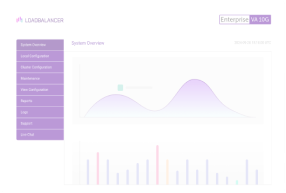Load balancing File Transfer Protocol and FTPS Servers
Benefits of load balancing File Transfer Protocol (FTP)
Load balancing File Transfer Protocol offers a number of benefits, including:
- High Availability (HA): Load balancing ensures that if one FTP/FTPS server fails or is taken offline for maintenance, traffic is automatically and instantly redirected to the remaining available servers in the pool. This prevents service disruption and guarantees that file transfers can continue without interruption, providing near-continuous uptime.
- Scalability and performance: Load balancers distribute incoming client connection requests across multiple servers, preventing any single server from becoming overwhelmed. This parallel processing allows the system to handle a higher volume of concurrent users and file transfers (scalability) while maintaining optimal performance (faster response times and transfer speeds). When demand increases, you can simply add more servers to the farm.
- Improved security: A load balancer can act as a reverse proxy, shielding the backend FTP/FTPS servers from direct exposure to the internet. This provides an additional layer of security by hiding the servers’ internal IP addresses. Load balancers can also offer protection against Distributed Denial of Service (DDoS) attacks by absorbing or filtering malicious traffic before it reaches the file transfer servers. For FTPS (which uses SSL/TLS encryption), a load balancer can handle the SSL/TLS offloading, decrypting the secure connection before passing the traffic to the backend servers. This reduces the computational load on the application servers, freeing up resources for file transfer tasks.
About (FTP) File Transfer Protocol
File Transfer Protocol also known as FTP is a protocol that is used to transfer files between computers on a network.
Using FTP grants users and computers the ability to exchange and transfer files between servers, desktop computers, online accounts and online software archives.
Why Loadbalancer.org for FTP?
Loadbalancer’s intuitive Enterprise Application Delivery Controller (ADC) is designed to save time and money with a clever, not complex, WebUI.
Easily configure, deploy, manage, and maintain our Enterprise load balancer, reducing complexity and the risk of human error. For a difference you can see in just minutes.
And with WAF and GSLB included straight out-of-the-box, there’s no hidden costs, so the prices you see on our website are fully transparent.
More on what’s possible with Loadbalancer.org.
How to load balance (FTP) File Transfer Protocol
FTP can be used either at command line or via FTP applications that provide a graphical user interface such as Cyberduck (for Mac) and Filezilla (for Windows).
However, in the real world FTP sites are heavily used and may require several attempts before being able to connect and exchange the necessary files. This is where introducing a load balancer can alleviate cumbersome connections by load balancing network traffic to other available FTP servers within the VIP cluster, ensuring high availability and scalability of the environment.

FTP provides two modes of operation, Active and Passive mode.
In active mode, the FTP server connects back to the client so client source IP transparency is a must. That’s ok though as Layer 4 has this is enabled out of the box, however, layer 7 requires Tproxy to be enabled and that comes with the caveat of needing two subnets; one for the VIP and the other for the FTP servers.
Alternatively, in passive mode, all connections are initiated by the client, meaning the FTP server then sends the client a port to use for the inbound data connection which can be a wide range of ports and, as such, it is useful to limit this port range.
| Protocol | Port | Load balancing methods |
|---|---|---|
| FTP-Active | 20,21 | Layer 4 NAT (Recommended): Traditional NAT mode provides easy implementation fast and transparent load balancing but usually requires a two-arm configuration (two subnets). Layer 7 Reverse Proxy: Tproxy must be enabled for transparency and two subnets must be used. |
| FTP-Passive | 21,high_port | Layer 4 NAT (Recommended) or Layer 7 Reverse Proxy |
















